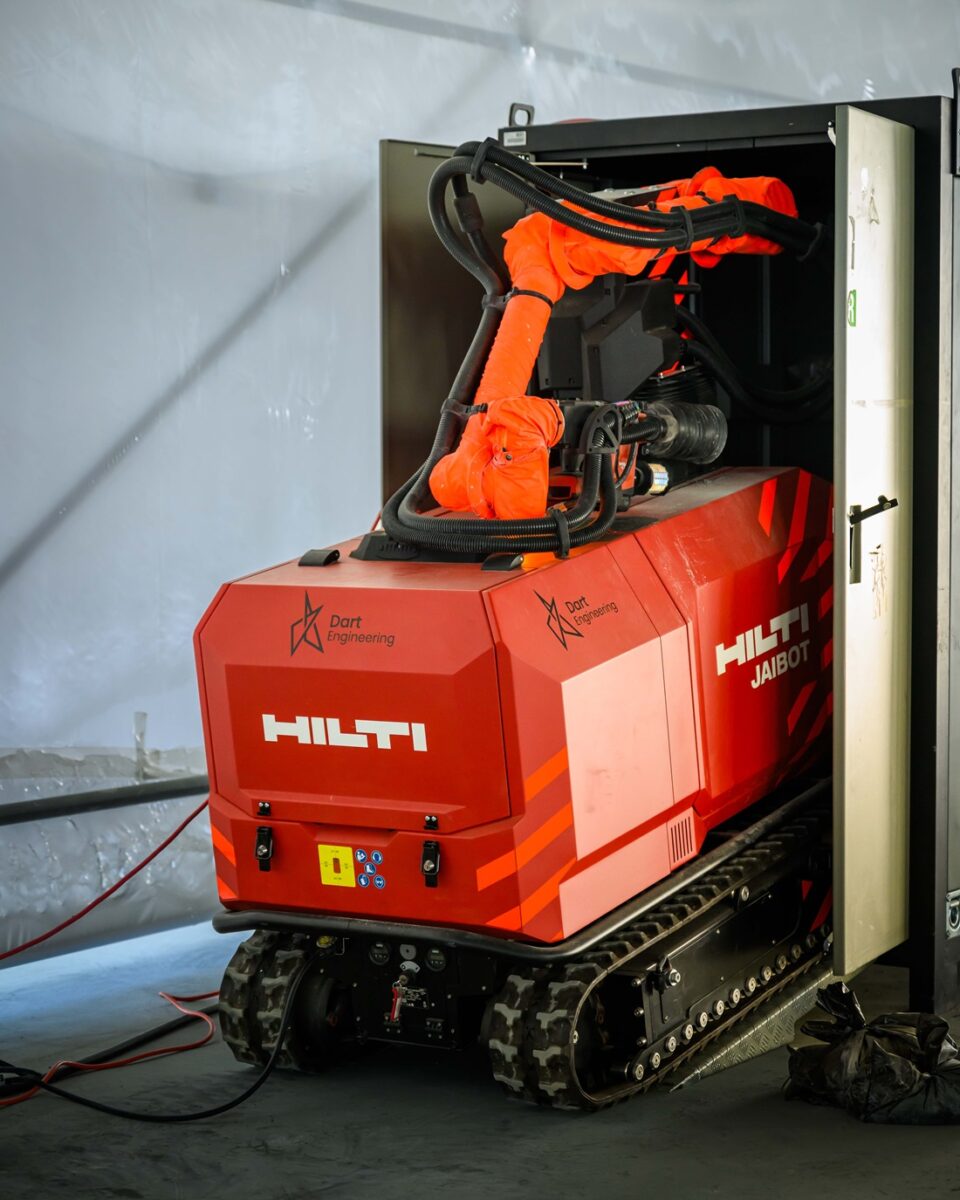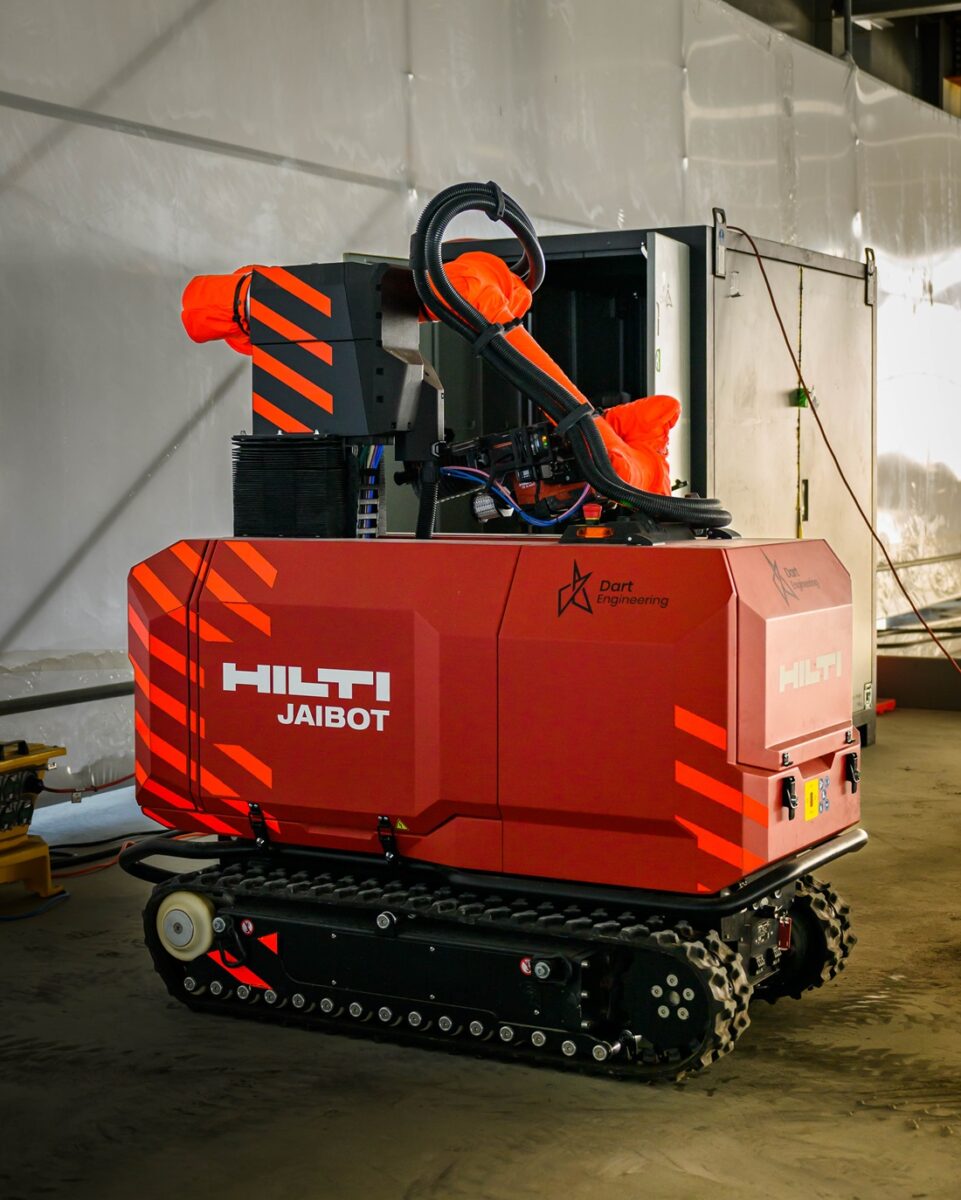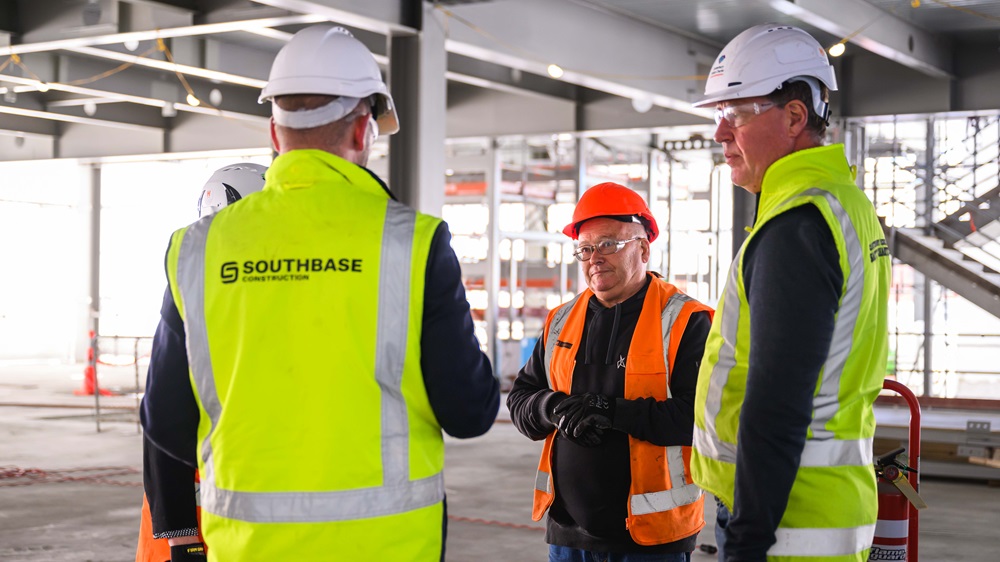The BIMSafe team were recently in Dunedin filming case study videos for the ACC Ōtepoti Project, and while we were there, we had the opportunity to pop across the road and visit the new Dunedin Hospital Outpatients Project, currently under construction by Southbase.
On site was the brand-new Hilti jaibot, a semi-autonomous drilling robot approximately large quad bike. Currently there are over 40 units globally which have been used on over 150 projects, and only three in Australasia . The machine is designed to be driven to the chosen drilling area by the operator using the track-based system and once switched back to drilling mode, the autonomous side of the machine takes over drilling all holes within a 2m radius of the main column in the given dimeter.
The design of the outpatients building has a significant amount of earthquake bracing to support the services structures in the ceiling space. According to the project team, the outpatients building has the biggest seismic support package ever installed in New Zealand. Approximately 40,000 holes are required to be drilled in the concrete floor to provide the anchors for the seismic supports and partition walls.

Jonathon Dutton is the BIM manager for Southbase construction, he explains that the Jaibot utilises the co-ordinated BIM model and Total Station to locate and drill the holes. The team had to develop the model to incorporate a more complex drilling situation, with numerous brackets and templates, hole widths and depths. Augmented reality will then be able to check that holes and services are all in the right place.
Mervyn Maskill, from Dart Engineering, is partnering with Southbase in using the Jaibot on the site. He says that there are numerous health and safety benefits using the robot, notably the elimination of the risk of working at height where elimination of the hazard is the most effective way to control. He has only been using BIM for 12 months and is excited about how well this can work.
“The Jaibot can drill all the holes with only one operator on the ground. He is not in a scissor lift or having to measure and drill at odd angles. The drill also contains a vacuum, so it is also a dust-free environment. The workers are not exposed to the usual wear and tear, so the common back, arm, and shoulder injuries are eliminated. There is less fatigue, tiredness, and the possibility for error”.
Collaboration between Southbase and Dart utilizing the BIM model has been key to getting this project underway. The team feel a real sense of pride and accomplishment in what is a New Zealand first for this technology. The big benefits for the use of the robot are greater accuracy and greater safety with less rework, less time, and people on site.


